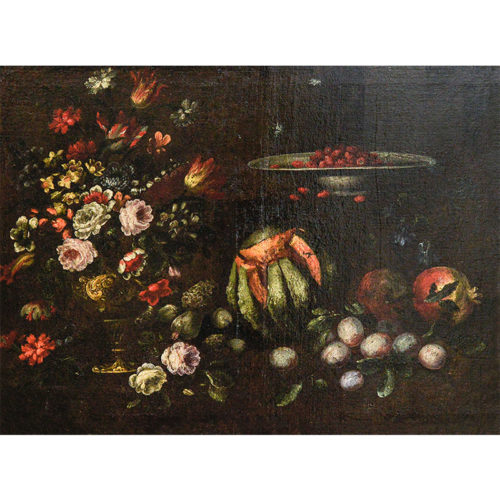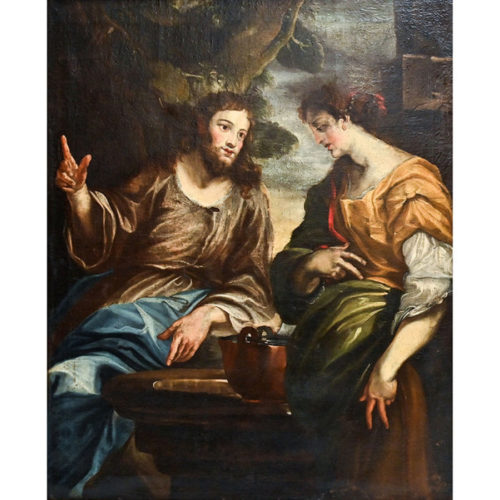"Still life with flowers and fruit" - Oil on canvas, original, dating back to the 17th century, with coeval frame. Restored and reintelated work
-
Out of stock
 Period: 17th century Measures: In frame H 90 x L 112.5 x P 6 / Canvas H 73 x L 98 cm
Period: 17th century Measures: In frame H 90 x L 112.5 x P 6 / Canvas H 73 x L 98 cm
